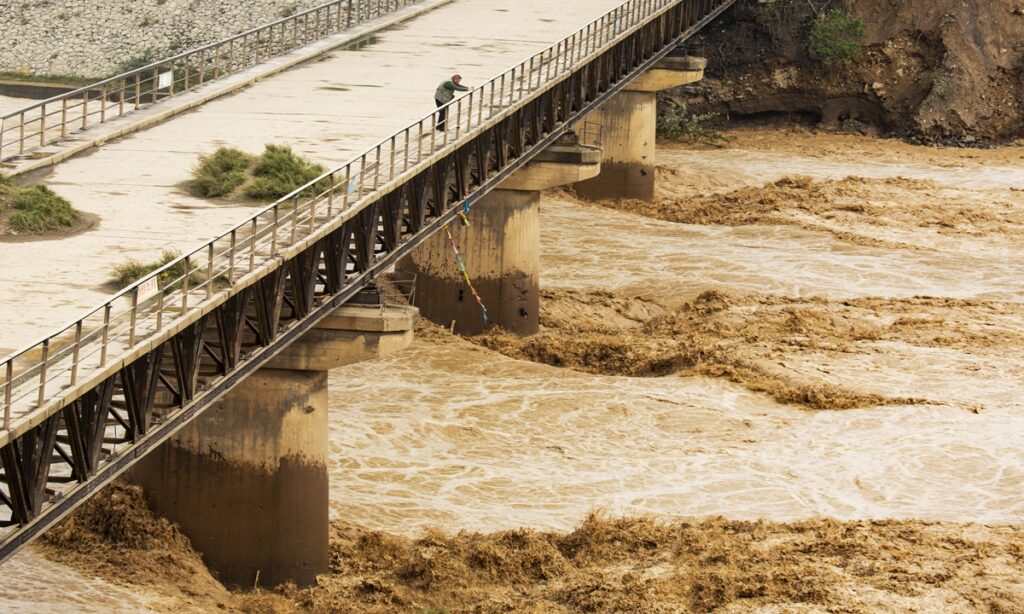Some flood-hit regions in central, northern and eastern China have called for enhanced preparations against flooding such as reinforcing embankment and 24-hour patrols to protect people’s lives and property as days of heavy rain triggered disasters such as house collapses during the National Day holidays.
In North China’s Shanxi Province, downstream sections of the Fenhe River experienced the largest flood crest in nearly 40 years due to the continuous heavy rain. A dyke built into the Fenhe River close to Qiaodong village in Xinjiang county was breached at around 5 pm on Thursday, with its breach length up to 20 meters, according to media reports.
Over 100 machines and vehicles and more than 500 people were dispatched to seal the breach using stone-and-brick stacks up to over 5,000 cubic meters. After 24 hours, the breach was closed at 4:30 pm on Friday, according to media reports.
Shanxi on Wednesday launched a level-3 emergency response for flood control after casualties in house collapses and landslides which were triggered by the heavy rain, the provincial emergency management department said.
Due to the floods, over 54,000 people were relocated in Shanxi, while 60 coal mines, 372 non-coal mines, 14 dangerous chemical enterprises, 1,035 projects under construction and 166 scenic spots were closed, Shanxi authorities said on Friday.
In parts of East China’s Shandong Province, downpours are predicted for Friday and Saturday, the Shandong meteorological department said on Friday. Shandong authorities have released guidelines in flood control and called for a full upgrade of water conservancy projects to enhance flood control capabilities.
In particular, it is necessary to strengthen the inspection and defense of key parts to ensure operation safety in case of emergency, including 24-hour real time monitoring.
The other regions also faced the huge pressure caused by the floods. In Central China’s Henan Province, at 11 am on Thursday, Sanmenxia Dam on the Yellow River, experienced the largest flood the first of its kind since 1979, with the water inflow up to 8,360 cubic meters per second, and the water outflow up to 7,990 cubic meters per second, according to Henan Daily.
From October 2, the Xiaolangdi Reservoir Dam on the Yellow River started to discharge floodwaters at a rate of 4,100 cubic meters per second, hitting a historical high-water mark of 271.18 meters, to ensure the flood control of the river, according to the Henan local media. Xiaolangdi was designed to ensure water supply and support power generation.
On October 5, the middle stream of the Yellow River, has experienced the No.3 flood peak this year, with the maximum water flow expected to reach 8,000 cubic meters per second, according to China’s Ministry of Water Resources.
The Ministry of Water Resources dispatched seven working teams to the frontline of the effected areas in Northwest China’s Shaanxi, North China’s Shanxi, Central China’s Henan and East China’s Shandong provinces to oversee flood control operations.
Sanmenxia Dam on the Yellow River started to discharge floodwaters on October 7 in North China’s Shanxi Province. Photo: VCG



